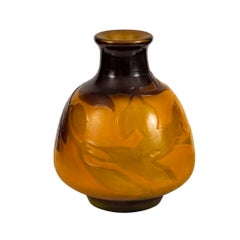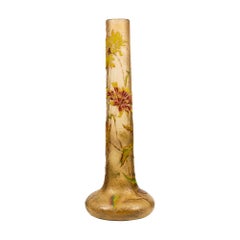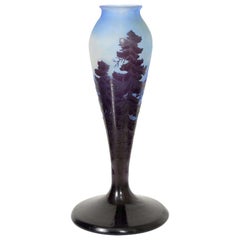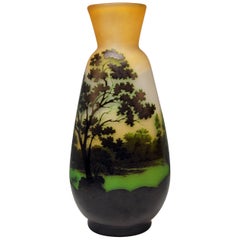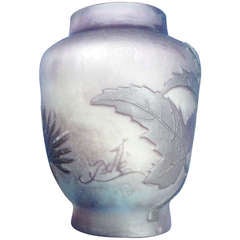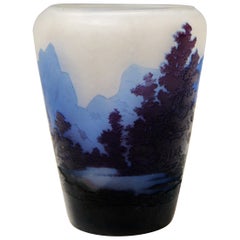Galle Vase Signature
Antique Early 1900s Vases
Art Glass
Antique 1890s Vases
Art Glass
Early 20th Century Vases
Art Glass
Vintage 1910s French Art Nouveau Glass
Glass
Recent Sales
Early 20th Century French Art Nouveau Vases
Glass
Vintage 1920s French Art Nouveau Glass
Glass
Early 20th Century French Art Nouveau Vases
Glass
Antique Early 1900s French Art Nouveau Glass
Glass
Antique Early 1900s French Art Nouveau Glass
Glass
People Also Browsed
Vintage 1920s French Art Deco Vases
Blown Glass
Vintage 1960s Italian Mid-Century Modern Porcelain
Porcelain
20th Century French Art Nouveau Table Lamps
Glass
Antique Early 1900s French Art Nouveau Glass
Glass
Vintage 1920s French Art Deco Vases
Blown Glass
Vintage 1970s Italian Mid-Century Modern Coffee and Cocktail Tables
Marble
21st Century and Contemporary Italian Animal Sculptures
Crystal, Gold Plate, Brass
Mid-20th Century French Mid-Century Modern Floor Lamps
Marble, Iron
Antique Late 19th Century Japanese Meiji Vases
Enamel, Silver
21st Century and Contemporary Italian Modern Side Tables
Concrete
Antique Mid-19th Century French Louis Philippe Commodes and Chests of Dr...
Marble
Early 20th Century French Art Nouveau Vases
Glass
Antique Late 19th Century Japanese Meiji Vases
Enamel
Antique Late 19th Century Japanese Meiji Vases
Enamel, Copper
Vintage 1960s Italian Post-Modern Coffee and Cocktail Tables
Stainless Steel
2010s Italian Mid-Century Modern Chandeliers and Pendants
Brass
Galle Vase Signature For Sale on 1stDibs
How Much is a Galle Vase Signature?
Émile Gallé for sale on 1stDibs
“Art for art’s sake” was a belief strongly espoused by the celebrated French designer and glassworker Émile Gallé. Through his ethereal glass vases, other vessels and lamps, which he adorned with botanical and religious motifs, Gallé advanced the Art Nouveau ideology and led the modern renaissance of French glass.
Gallé was the son of successful faience and furniture maker Charles Gallé but studied philosophy and botany before coming to glassmaking later in life. The young Gallé’s expertise in botany, however, would inform his design style and become his signature for generations to come.
After learning the art of glassmaking, Gallé went to work at his father’s factory in Nancy. He initially created clear glass objects but later began to experiment with layering deeply colored glass.
While glassmakers on Murano had applied layers of glass and color on decorative objects before Gallé had, he was ever-venturesome in his northeastern France, taking advantage of defects that materialized during his processes and etching in natural forms like insects such as dragonflies, marine life, the sun, vines, fruits and flowers modeled from local specimens.
Gallé is also credited with reviving cameo glass, a glassware style that originated in Rome. He used cabochons, which were applied raised-glass decorations colored with metallic oxides and made to resemble rich jeweling. Gallé's cameo glass vases and vessels were widely popular at the Paris Exhibition of 1878, cementing his position as a talented designer and pioneer.
During the late 19th century, Gallé led breakthroughs in mass production and employed hundreds of artisans in his workshop.
Botany and nature remained great sources of inspiration for the artist's glassmaking — just as they had for other Art Nouveau designers. From approximately 1890 to 1910, the movement’s talented designers produced furniture, glass and architecture in the form of — or adorned with — gently intertwining trees, flowers and vines. But Gallé had many interests, such as Eastern art and ceramics. The Japanese collection he visited at the Victoria and Albert Museum in London (then the South Kensington Museum) during the 1870s had made an impression too.
Breaking free from the rigid Victorian traditions, Gallé infused new life and spirit into the art and design of his time through exquisitely crafted glass vessels and pioneering new glassworking techniques.
Find a collection of Émile Gallé vases and other furniture and decorative objects on 1stDibs.
Finding the Right Vases for You
Whether it’s a Chinese Han dynasty glazed ceramic wine vessel, a work of Murano glass or a hand-painted Scandinavian modern stoneware piece, a fine vase brings a piece of history into your space as much as it adds a sophisticated dynamic.
Like sculptures or paintings, antique and vintage vases are considered works of fine art. Once offered as tributes to ancient rulers, vases continue to be gifted to heads of state today. Over time, decorative porcelain vases have become family heirlooms to be displayed prominently in our homes — loved pieces treasured from generation to generation.
The functional value of vases is well known. They were traditionally utilized as vessels for carrying dry goods or liquids, so some have handles and feature an opening at the top (where they flare back out). While artists have explored wildly sculptural alternatives over time, the most conventional vase shape is characterized by a bulbous base and a body with shoulders where the form curves inward.
Owing to their intrinsic functionality, vases are quite possibly versatile in ways few other art forms can match. They’re typically taller than they are wide. Some have a neck that offers height and is ideal for the stems of cut flowers. To pair with your mid-century modern decor, the right vase will be an elegant receptacle for leafy snake plants on your teak dining table, or, in the case of welcoming guests on your doorstep, a large ceramic floor vase for long tree branches or sticks — perhaps one crafted in the Art Nouveau style — works wonders.
Interior designers include vases of every type, size and style in their projects — be the canvas indoors or outdoors — often introducing a splash of color and a range of textures to an entryway or merely calling attention to nature’s asymmetries by bringing more organically shaped decorative objects into a home.
On 1stDibs, you can browse our collection of vases by material, including ceramic, glass, porcelain and more. Sizes range from tiny bud vases to massive statement pieces and every size in between.
